What is a tube die and how to use it?
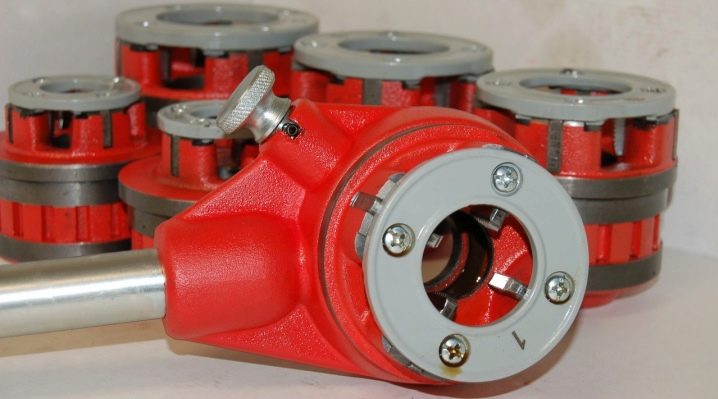
Klupp is in demand in the construction industry, repair of plumbing, gas, heating systems. From the material in this article, you will learn what it is, what it happens, what are the main nuances of its use.

What it is?
Pipe die is a tool used in the installation or repair of metal pipes. It is used to cut metric threads at the end of pipes.
It differs from the plate in a more complex structure. It looks like a round tubular frame and is made of durable metal. 4 incisors are fixed inside it.
The instrument has a wide holder with a guide tube. This minimizes the chance of skewing the cut threads. In the course of cutting, the cutters prepare the roughing track.
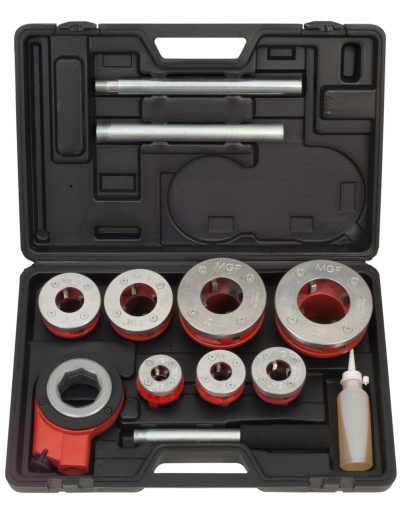
Further, high blades pass along it, forming the result. Klupp is needed to create sealed and durable connections. Its cutting edge has removable inserts.
Installation of cutters is carried out taking into account the numbering, which corresponds to the shift of the threaded pitch of each of them. The guide of the device is matched to the diameter of the pipe to be cut.
The rotation of the device can be carried out by means of a handle, as well as a ratchet with a ratchet mechanism.
Klupp is used in the arrangement of wells and wells. It is necessary in the manufacture of prefabricated structures (for example, greenhouses, staircases, greenhouses).
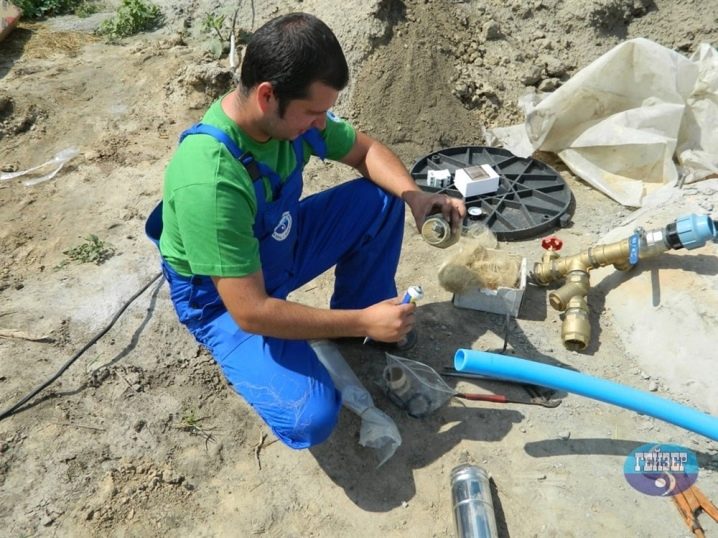
Views
Basic designs are constantly being improved. The entire market range is divided into 2 main lines: manual and electric. Each species is different.
Depending on the modification, the dimensions of the products are 1/2, 1/4, 3/4, 1, 1 ½ inches. Most often, craftsmen buy varieties with parameters of 1/2 and ¾ inches, since it is these diameters for the main part of pipelines in apartment buildings in our country.
Devices are stationary and portable. Variants of the first type are high-power machines. With their help, you can cut threads on pipes of different diameters.
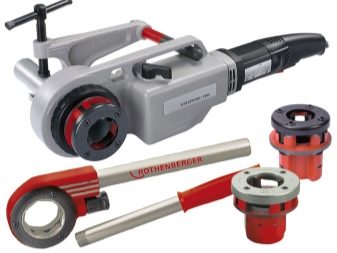
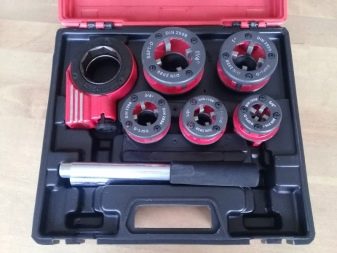
Portable counterparts are smaller. They fit perfectly into boxes with other tools used by professional craftsmen.
Tools differ in the type of thread. On this basis, they are divided into 2 rulers: with marks for inch and metric threads.
The first ones are installed on any devices sent to the European market. Their cutting angle is 55 degrees. For analogs of the second group, it is 5 degrees more. The parameters themselves are indicated in mm.
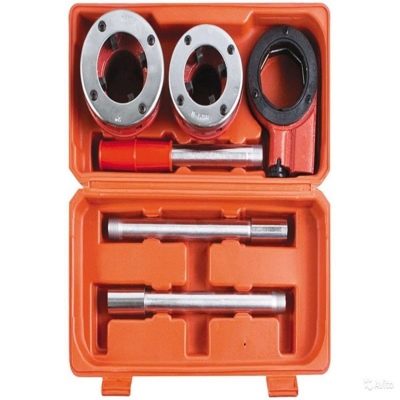
For mechanical threads, an oblique die is purchased.
Manual
Manual klupps are budget type tools. For their work, manual power is used. Their incisors are pressed with a washer plate, they are held by screws.
During operation, they wear out, then they are replaced with new ones. Models differ in design. Cheaper types have only a holder with cutters. They are designed for one-time work.
The function of the handle in the devices is replaced by a pipe wrench. When using it, a skew of the cut thread is possible. However, with careful work without haste, defect-free work is possible.
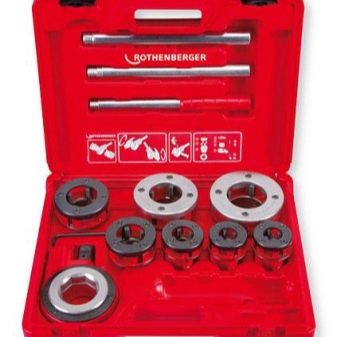
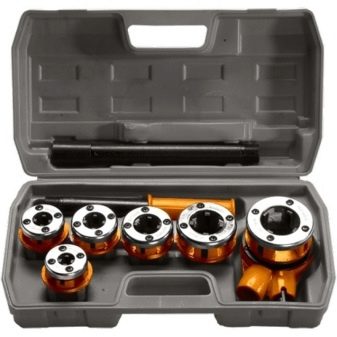
Ratchet counterparts are more convenient to operate. They are more expensive and are intended for professional use. These are klupps with which you can perform dozens of connections per day.
They do not provide for the permutation of the handle; the device is wound in a reciprocating motion.
Among other varieties on sale there is an adjustable threading die. It is considered universal. Assumes the setting of the distance between the incisors.

It is designed for threading pipes of different diameters. The main part of the assortment is made in China, not all devices are of high quality and assembly accuracy.
Among such models, products from German manufacturers are in great demand. With their help, precise threads are cut to ensure a hermetically sealed pipe connection.
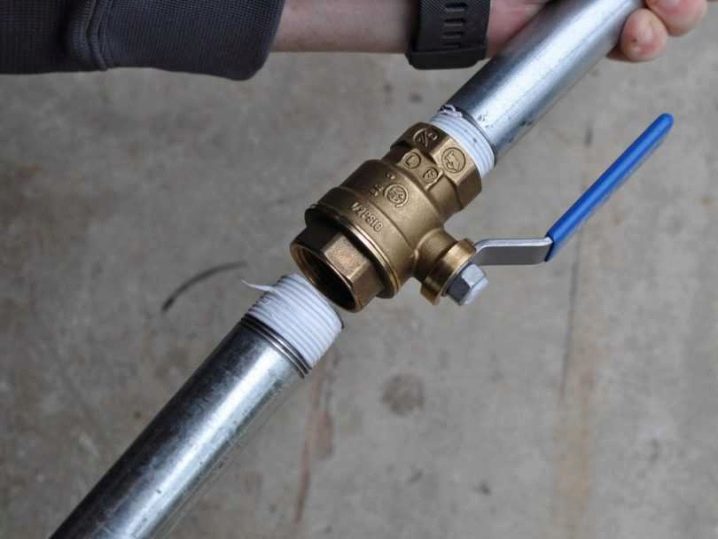
Electrical
Electrical appliances are visually similar to a grinder. However, in place of the cutting disc, there is a threading die. The devices work without manual rotation.
The design includes a clamping clamp. Thanks to her, there is no need for further fixation. After pressing the button, the electric motor starts, spinning and slicing.
The devices have low power consumption. With their help, you can work with metal from different steel alloys. This is ensured by gearboxes with sufficient transmission capacity.
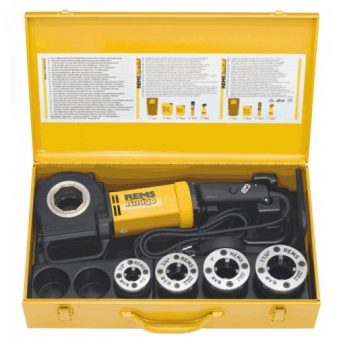
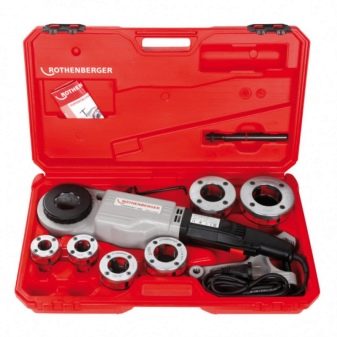
Its capacity varies between 800-1700 tons. Most often they are supplied complete with replaceable die heads for pipes with a diameter of 1.5-5 cm for metric threads.
The number of heads included in the package is 3-6, which depends on the parameters and the material from which the pipes are made.
The electric motor rotates quickly, while the work piece of the equipment rotates slowly. Despite the ease of use, the electric die-cutter is limited in its capabilities.
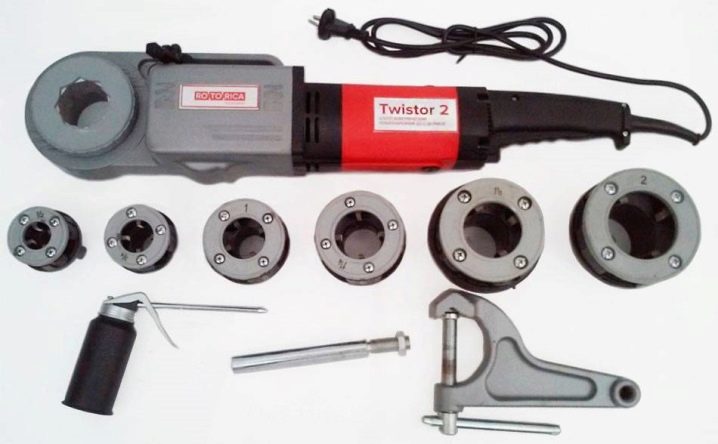
Due to its size, it cannot be used in hard-to-reach places. For example, they cannot thread pipes hidden in narrow niches that hide plumbing.
Therefore, in the arsenal of professional craftsmen there are mainly hand tools.

Popular models
Various leading brands are engaged in the production of tools, supplying to our market klups for pipe and metric cutting.
Many companies sell products online. The rating of such brands includes Bison, Enkor, Fit, Voll, Virax, Rekon.

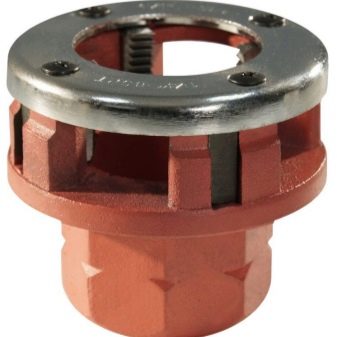
Popular modifications in demand among the consumer include klupps: 700 RIDGID 12651, REMS "Amigo 2 540020", RIDGID 690-I 11-R 1 / 2-2 BSPT, Voll V-Matic B2, ZIT-KY-50.
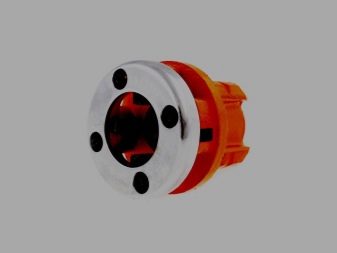
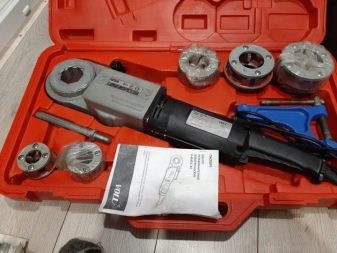
Additional accessories
Depending on the type, the klupp models may have various additions. For example, the kit may include replacement cutters. The package may include a part for rotary movements.
It is a head with a handle-holder, placed on the cylindrical area of the die with edges. Thanks to the ratchet, the device can be screwed in without axial rotation through 360 degrees.
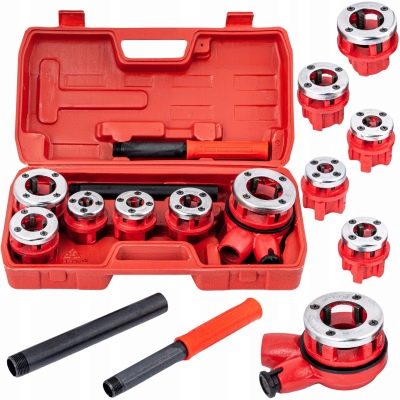
The sizes of the dies included in the kit are 15, 20, 25, 32, 40, 50 mm. The type of accessories is determined by the manufacturer.
For example, a domestic brand "Zubr" sells kluppa without attachments and complete with levers in the amount of 3, 4, 5 pcs. The heads are painted with red powder.
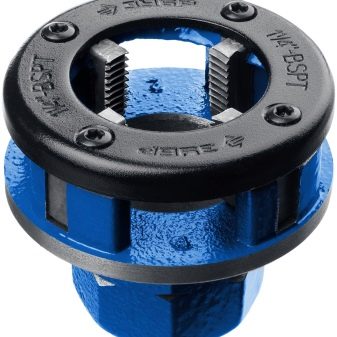
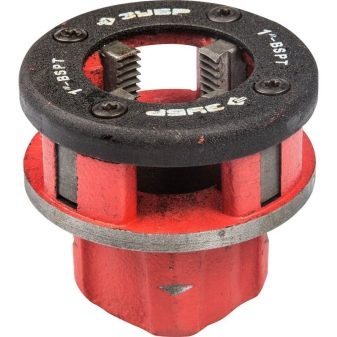
Sibrtech (1 more Russian brand), offers to purchase ratchets and heads separately at the best price. The manufacturer's shroud is designed for cutting self-sealing BSPT threads as well as cylindrical BSPP threads.
By delivering the parts separately, the customer can only buy the attachments they need, saving on the kit price. For example, you can purchase a ratchet with an extension.

Separate heads for klups are offered by the brand Stayer... They are powder painted in black.
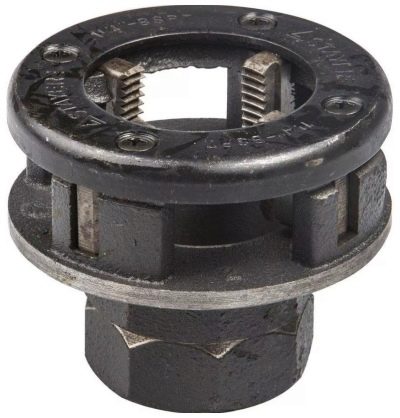
In the package of devices of the French company Virax includes 4 heads of different sizes. More expensive professional options are equipped with 4-6 lers.
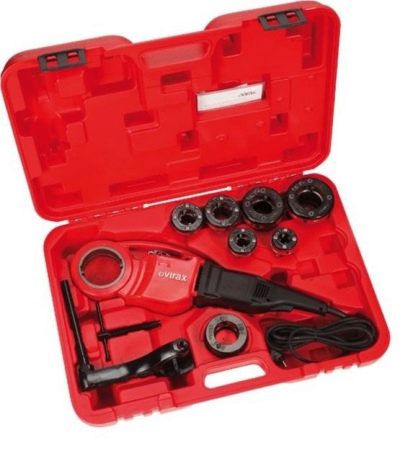
Rems delivers to the market taper and bolt thread cutters. They are equipped with a steel ratchet handle with a plastic sheath. Additionally, they have a rubber pad to prevent slipping of hands during work.The devices are equipped with 7 levers.
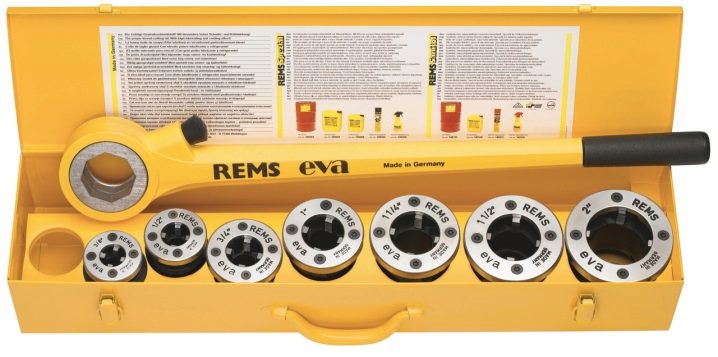
How to use it correctly?
You need to work with a threading die on the same principle as when working with a die. The rules of use are simple.
Initially, the pipe end is chamfered. Despite the tapered position of the blades, this will increase the service life of the appliance.
To simplify work with a metal-cutting tool, a cooling lubricant is used. Someone uses a washing liquid for this purpose, others use waste oil or grease.

It is necessary to apply lubricant to the pipe itself and the cutting comb. The ideal tool is a threaded solid oil. If not, diesel fuel or engine oil is used as an alternative.
However, these types of lubricants have a negative effect on the quality of the finished thread. There should not be a lot of lubrication, otherwise tears cannot be avoided during reinforced cutting.
The pipe must hold well, especially when it is welded to the riser. It is necessary to exclude the possibility of scrolling of the riser and rupture of the weld.
It is necessary to eliminate the risk of damage to the communication system of the entire house. Klupp is attached to the metal pipe with the side with the cutters on the outside.
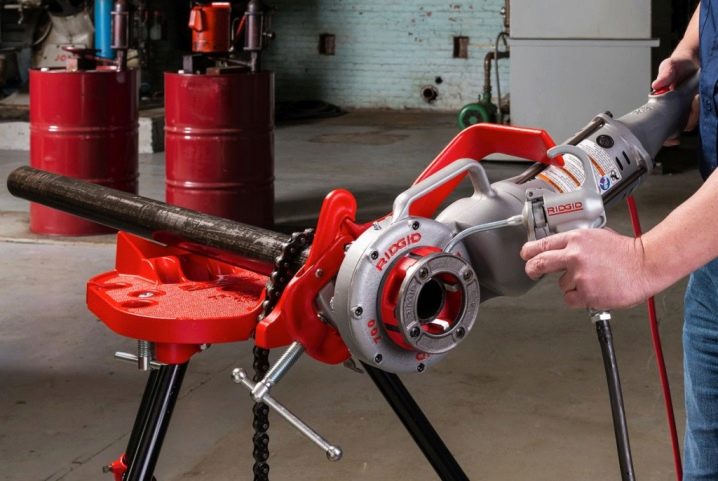
Then proceed to screwing the device. The first turns are performed slowly, constantly checking for skew. If done correctly, all threads will be flawless.
You need to rotate the device to the effort... As soon as they appear, this will indicate that the cutters are clogged with metal shavings.
To get rid of them, you need to scroll the tool in the opposite direction, a turn or half a turn.
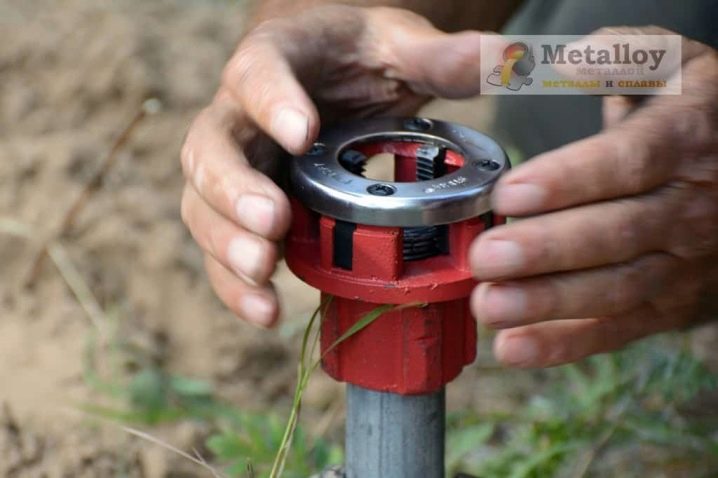
Then you can continue forward rotation. When using the reception of rotation in different directions, overheating of the blades is excluded, so they wear less.
This improves the quality of the thread being cut and prevents licking. In total, 4 full turns should be obtained during cutting. Such a connection will be reliable and practical.
Do not rely on pipe equipment with 2 or 3 turns. Their number is not a guarantee of a tight connection.
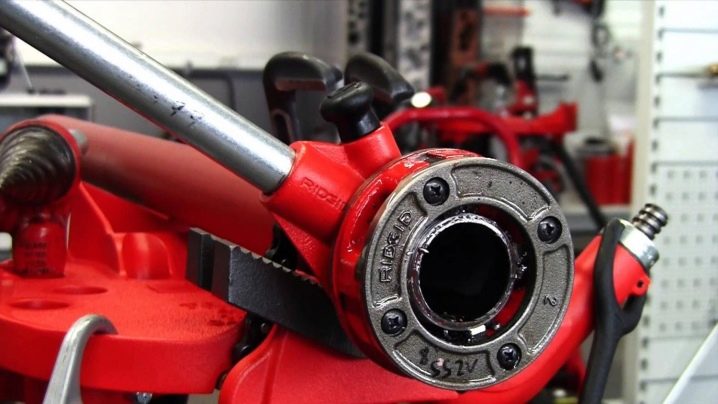
At the end of the work, it will be difficult to wind a crane or a squeegee on it. This is due to the presence of a cone due to the peculiarity of the die-cut comb. The problem is solved by lubricating the threads and re-running the device.
When removing the metal does not give the desired result, you cannot do without disassembling the die. It is necessary to remove the fixed cutters and turn them over so that the narrow comb with large cutting edges can be twisted forward onto the pipe.
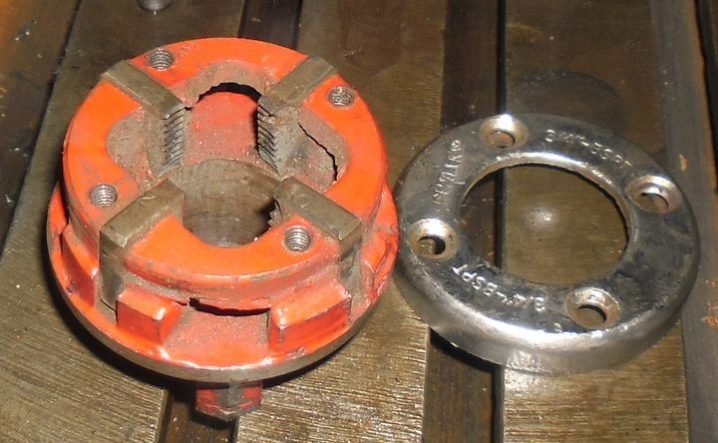
A couple of turns of the die will go easily, then it will begin to remove the shavings. Without knowing this, beginners screw the incisors more than 4 turns. This is how the cone starts further.
However, this is not always possible. For example, this cannot be done when threading is required in a small section of pipe, or when it comes out of the wall, if there is little room for rotation.
To make the tool last longer, in addition to chamfering, before starting work, you need to remove rust and paint from the pipe where the threads will be cut. This is done with a file or grinder with an emery disc.
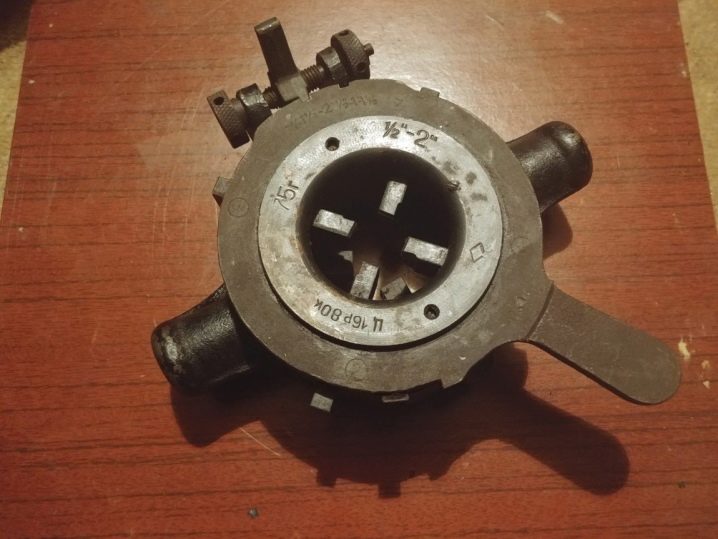
Nuances of choice
Choosing one or another tool, you need to start from the scope of tasks, the type of product, its strength and reliability. Not everything that is sold on the domestic market is worth buying.
It is not worth purchasing a cheap disposable die. Practice shows that most of these tools are unusable. Their incisors can burst with the required force. It happens that they break literally after a couple of turns.
The average price of a good option starts at 1000 rubles. It is available to a wide range of buyers.... It is better to buy a product focusing on the upper limit of the available modifications.
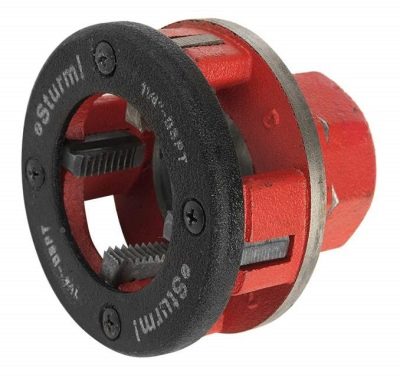
The body must not be cast iron. It does not always withstand the forces exerted by threading.
You need to buy klupp in a store with a proven reputation.To do this, before buying, you need to flip through reviews of real buyers about the practicality and reliability of the toolkit.
It is important to pay attention to the package bundle. It can be traditional and extended. The second type of tool has dies of different diameters.
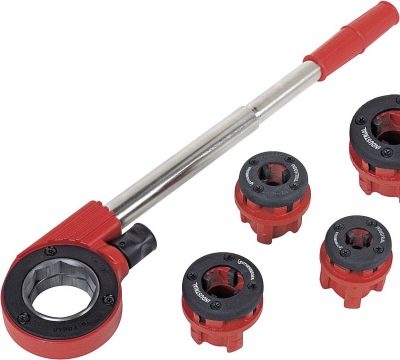
The size of the device is often the determining factor. Electric versions can weigh up to 20-25 kg. However, there are also more massive items on sale.
To use the device conveniently, it is necessary to take into account its ergonomics. You can understand this by taking the instrument in your hand.
Among other nuances, you need to take into account the type of material, as well as the direction of the thread of the existing nozzles. The kits may include both left- and right-hand thread attachments.

It is necessary to pay attention to the material from which they are made. If it is a cheap raw material, it will wear out quickly. It is more expedient to take options made of alloy steel.
So that there are no failures during the work, you need to inspect the product for build quality. And they are also determined with the type of planned work, correlating it with the type of device.
Household and professional models differ not only in the level of practicality and price, but also in the resource of use. The more expensive the product, the more changes in its design.
The choice can be made based on the recommendations of experts. For example, budget products are capable of cutting threads on low carbon steel pipes.

If you need to cut through especially hard carbon grades (for example, stainless steel), you need the highest quality cutters and expensive tools.
When it is planned to work with soft mild steel pipes in a minimum volume, a traditional ram, which can be rotated with a gas wrench, is sufficient.
Experts advise purchasing high-quality professional equipment. If you need it for a short time, you can rent it. Products of the Rems and Ridgid brands have proven themselves well.
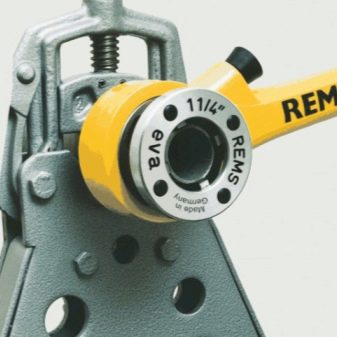
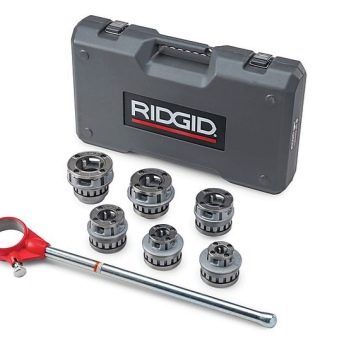









The comment was sent successfully.